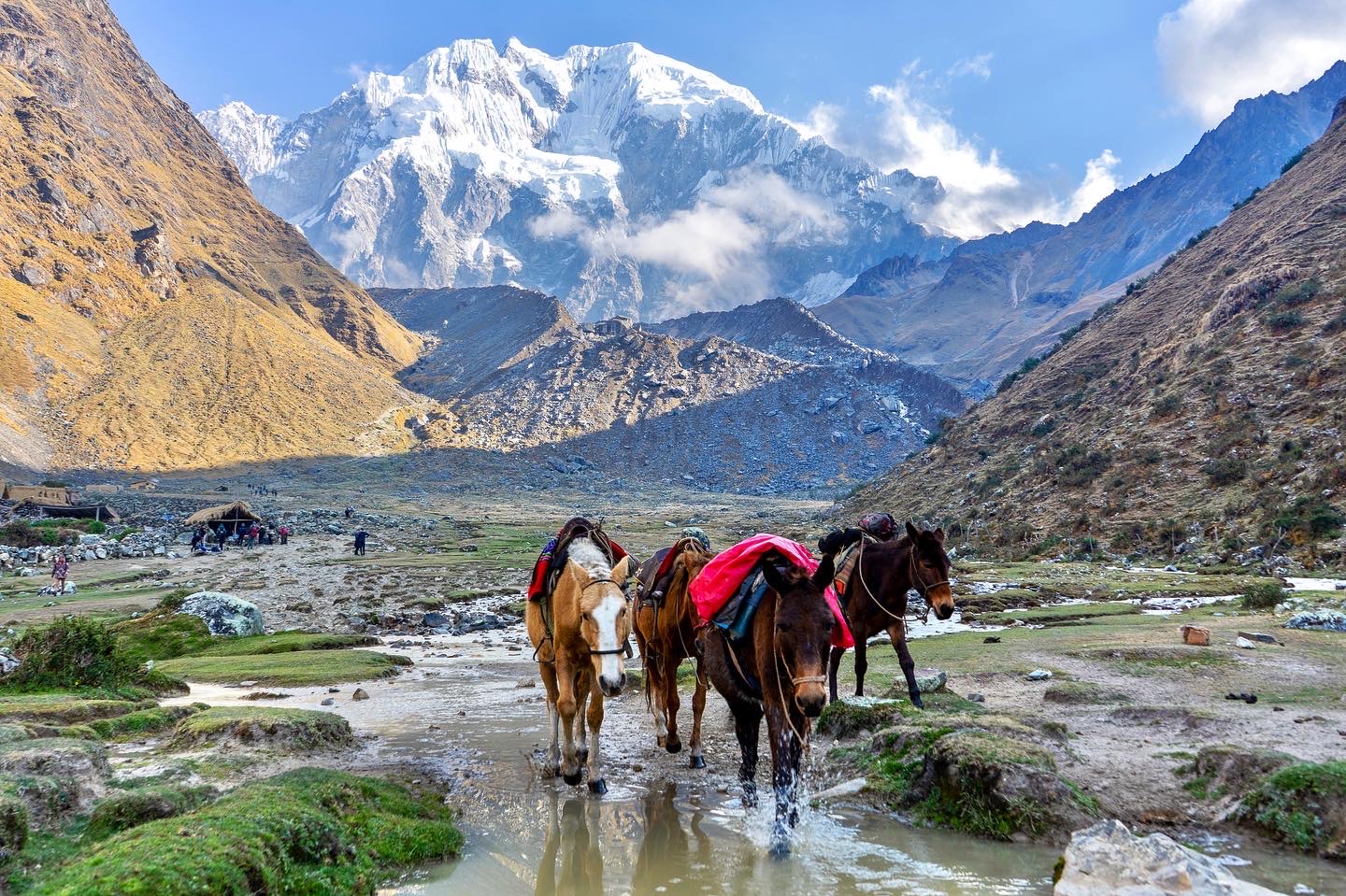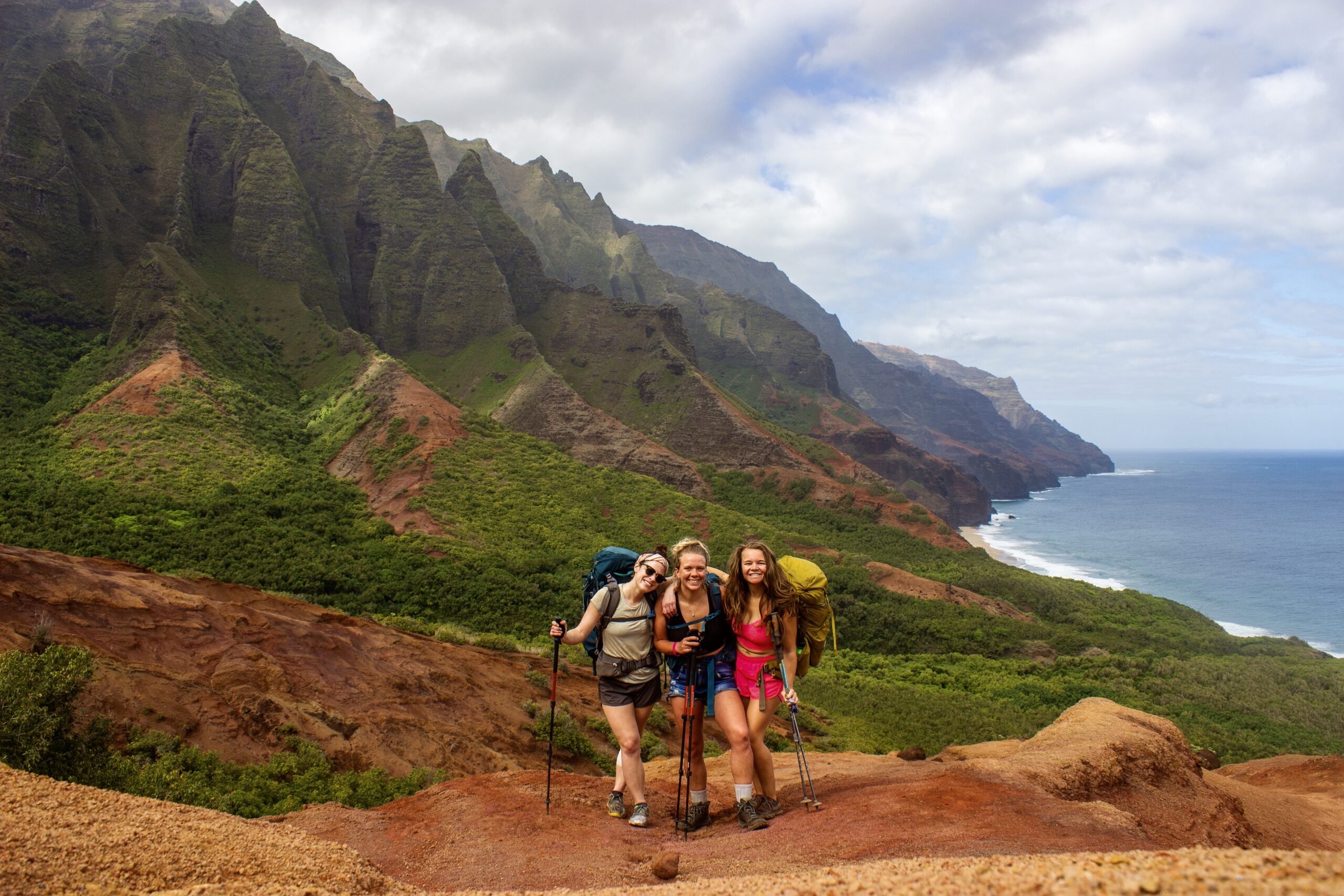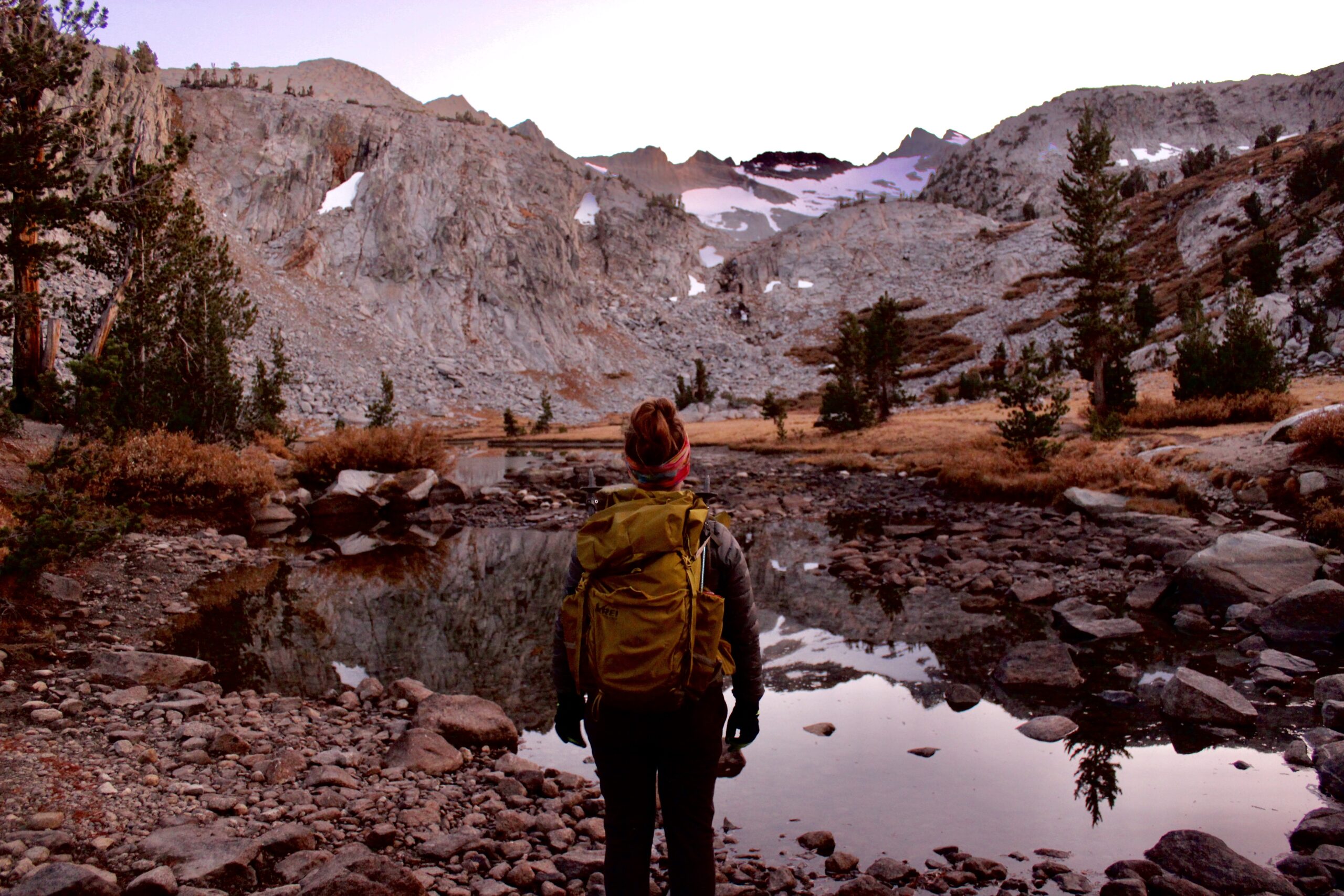Trekking Cerro Castillo Circuit
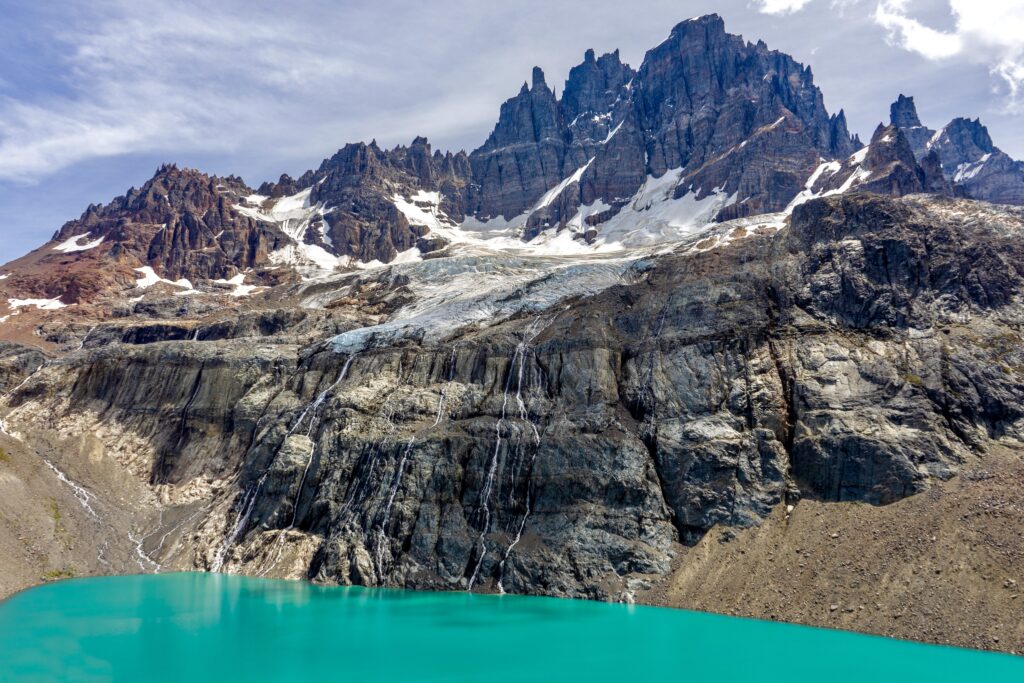
One of the highlights of my travels along Patagonia’s Carretera Austral was trekking Cerro Castillo Circuit. The diverse terrain of the Cerro Castillo trek features jagged mountain peaks, hanging glaciers, rugged passes, dense forests, and the famous bright blue Laguna Cerro Castillo.
Far less crowded and cheaper than trekking in Torres del Paine National Park or to Fitz Roy in Los Glaciares National Park, trekking Cerro Castillo Circuit is a great alternative and offers some of the most impressive landscapes Chile is known for.
Trekking Cerro Castillo Circuit Guide
| Distance | 35 mi, 56 km |
| Time | 4 days on average, 3 if you’re fast |
| Location | Cerro Castillo National Reserve, Aysen Region of Chile, south of Coyhaique |
| Starting Point | Las Horquetas Trail |
| Ending Point | Villa Cerro Castillo |
| Difficulty | Moderate – Difficult |
| Elevation Gain/Loss | ~ 8400 – 10,000 ft, 2560 – 3050 m (depending on direction) |
| Highest Point | 5550 ft, 1690 m Paso Morro Negro |
| Terrain | Maintained trail through the forest, small to medium river crossings, rough steep passes with loose rock, snow in the early season. |
| Permit Required | Yes; 30,000 Chilean Pesos, pay at the park entrance |
| Guide Required | No |
| Book Camps Ahead | No |
| Campsites are Established | Yes, you must camp in the designated camping areas. There are no services or lodges on the trail, you must carry all food, cooking equipment, and shelter. |
| Lodging/Services | No |
| Highlights | Cerro Castillo Lagoon, Paso Morro Negro, Penon Pass, Laguna Duff |
Cerro Castillo Weather
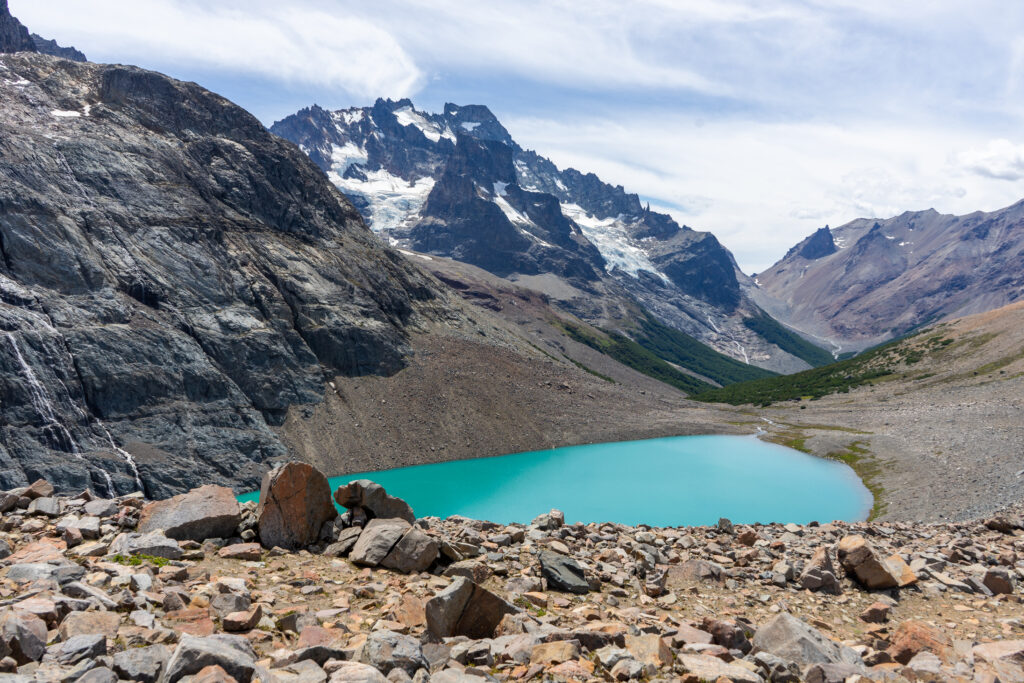
The summer months to early fall from December to Mach provide the best weather to trek Cerro Castillo. Snow is sometimes present in the early season, but it’s usually manageable.
Before December, the trail often has more snow. Travel is more difficult and the risk of rockfall increases. Autumn brings cooler temperatures and a greater chance of rain and early-season snow.
Always prepare for rapidly changing weather. Patagonia is known for wind and rain moving in quickly, even during the warmest summer months.
Can Cerro Castillo be walked in either direction?
The Cerro Castillo trek is a point-to-point trail. The northeastern trailhead starts an hour south of Coyhaique off Route-7 at Las Horquetas. The southwestern trailhead starts in Villa Cerro Castillo.
From Villa Cerro Castillo, it’s about 4 mi, 6.5 km, of walking on a dirt road to reach the park entrance.
It’s possible to trek Cerro Castillo in either direction. There are pros and cons to both.
Cerro Castillo Circuit Map

Starting at Las Horquetas
Most hikers start trekking Cerro Castillo at Las Horquetas and end in Villa Cerro Castillo. Along the way many hikers become friends. There are no services at the trailhead, just a parking lot.
This route has slightly less elevation gain than the opposite direction; however, the descents over the two passes are steeper while the ascents are slightly more gradual.
This route ends with a 4 mi, 6.5 km hike back to Villa Cerro Castillo. From there you can take a bus or hitchhike to your next destination.
**Note that you must enter the Las Horquetas park entrance before 1:00 pm to allow enough time to get to the first campground. Cerro Castillo National Park employees strictly implement the park entrance rule at registration.
Starting at Villa Cerro Castillo
Trekking Cerro Castillo backward is less popular, however, it was my preferred choice. I wanted to climb up the steeper ascents and descend the more gradual parts.
In the end, it didn’t make much of a difference, but hiking in this direction allowed plenty of time on my first day to hike up to Laguna Duff (my favorite part of the hike). Exhausted hikers usually pass on Laguna Duff on their last day at the end of the trek.
I finished trekking Cerro Castillo Circuit at Las Horquetas and easily hitchhiked back to Coyhaique.
**Note that you can enter through the Estero Parada entrance (the Villa Cerro Castillo park entrance point) from 7:00 am to 4:00 pm. Park officials strictly forbid entry after 4:00 pm.
How to Get to Cerro Castillo
Because the Cerro Castillo hike starts just over an hour from Coyhaique, the city is a popular base point. You can stock up on food and rent gear in town if needed. If you are flying in, Balmaceda Airport is the closest airport – about 45 minutes from Coyhaique.
By Bus
The bus is the most popular option for reaching the trailheads of Cerro Castillo National Park.
Coming from Coyhaique, a bus leaves every morning at 8 am and passes through both Las Horquetas and Villa Cerro Castillo. It’s 8,000 Chilean pesos one way per person. You’ll reach Las Horquetas around 9:30 am and Villa Cerro Castillo around 10:30 am.
When you finish trekking Cerro Castillo, you can hang out along the side of the road in Las Horquetas or at the bus stop in Villa Cerro Castillo and wait for the next bus.
There are a couple of buses that come from Cochrane and nearby southern cities each day. The bus will likely pass through the towns between 12:00 pm and 4:00 pm but timing varies, so prepare to wait around.
Your other option is hitchhiking back, and one of the most popular options when finishing the trek.
By Car
Many travelers rent cars along the Carretera Austral. Coyhaique is a popular rental car pick-up or drop-off destination. A car provides flexibility in your travels, but in this case, it will sit unused at a trailhead for a few days.
If you choose to reach the trailhead by car remember that you’ll still have to bus back around or hitchhike back to your car at the end of the trek.
Hitchhiking
Hitchhiking is very common along the Carretera Austral and thankfully, the stretch from Coyhaique to Villa Cerro Castillo receives decent traffic, so it’s easy to hitch a ride.
I was often picked up within 5 minutes around the city of Coyhaique and I only had to wait 20 minutes once in that area.
Cerro Castillo Camping
There are 4 main campsites along the Cerro Castillo trek. While still listed on maps, La Tetera Campground is closed for restoration.
Cerro Castillo National Park requires all hikers to camp in the established campgrounds. All campgrounds have accessible water sources and toilets. All campgrounds, except Porteadores, have picnic tables. Other than a camp stove, open fires are prohibited along the Cerro Castillo Circuit.
Campamento Rio Turbio

Rio Turbio is the first campsite you’ll pass when hiking from east to west. Most people camp here their first night when trekking Cerro Castillo. It’s located alongside the rushing Rio Turbio, a glacially sourced river surrounded by high mountain peaks.
There are plenty of campsites spread out along the river here.
Campamento Rio Bosque
Rio Bosque Campground is a beautiful campground located in a dense forest alongside a rushing river with falls. It’s another stunning spot along the trail, with many campsites available.
Campamento Porteadores
Portedores Campground is one of 2 campgrounds people spend their last night at when heading from east to west, or their first night when heading west to east. This campground sits next to a small stream that flows year-round and is surrounded by trees providing shade.
It’s a convenient spot if you’re tired on your last day (or first if you hike in the opposite direction). It’s the closest campground option to Villa Cerro Castillo.
Porteadores Campground is more crowded and farther from Laguna Duff than the upper campground Neozelandes.
Campamento Neozelandes

Campground Neozelandes was by far my favorite campground when trekking Cerro Castillo Circuit. It’s less crowded than the nearby Porteadores Campground and offers some of the best views.
The campground itself is well-shaded by trees and just a couple hundred feet away a valley opens up with a gentle river flowing through and 360-degree views of the surrounding mountains.
The hike up to Laguna Duff from here is only 1.5 miles each way (2.5 km) making it the perfect option for an evening hike.
Trekking Cerro Castillo Circuit in 3 or 4 Days?
The Cerro Castillo trek is most commonly completed in 4 days, however, if you’re in a time crunch and you’re a fit hiker, it’s possible to complete it in 3 days.
Trekking Cerro Castillo Circuit 4 Days
Most people spend 4 days trekking Cerro Castillo. You can take your time, form friendships on the trail, and enjoy an extra night in the backcountry. Here is an ideal 4-day Cerro Castillo trek itinerary:
Day 1: Las Horquetas to Río Turbio Camp
10 mi, 1500 ft, gain, 1000 ft loss | 17 km, 450 m gain, 300 m loss
From Las Horquetas to Rio Turbio campsite is about 10 mi or 17 km. The trail is relatively flat, winding through the forest and crossing streams. It’s considered the easiest section of the trail and takes about 5 hours on average.
Day 2: Rio Turbio Camo over Penon Pass and to Rio Bosque Camp
6.5 mi, 2400 ft, gain, 2100 ft loss | 10.5 km, 730 m gain, 640 m loss
Rio Bosque Campground isn’t too far from Rio Turbio Campground however the steep ascent and descent over Penon Pass lie between. Many people camp at Rio Bosque on their second night as it’s a long tough day and it’s nice to take your time enjoying the views along the way.
Day 3: Rio Bosque Camp to Porteadores or Neozelandes Camp over Morro Negro
To Portedores: 4.8 mi; 7.7, 2100 ft, gain, 2700 ft, loss | 7.7 km, 640 m gain, 820 m loss
To Neozelandes: 7 mi, 3100 ft gain, 2800 ft, loss | 11 km, 940 m gain, 850 m loss
Day 3 is the long steep ascent and descent over Morro Negro. Along the way enjoy the impressive views of Laguna Cerro Castillo and if your timing works out, have a snack break or lunch there.
Continuing on you’ll ascend the high point of the trek Morro Negro before the long descent down to your camp of choice.
Porteadores Camp to Neozelandes Campground is an additional 2.3 mi, 3.7 km gaining 970 ft, 300 m. Compared to the rest of the Cerro Castillo Circuit, this gain feels very moderate.
Add on to Laguna Duff (Day 3 Evening or Day 4 Morning)

Laguna Duff is an additional 1.5 mi, 2.4 km from Neozelandes Camp. The elevation gain is approximately 1000 ft or 300 m. The trail starts moderately winding through a forest until it quickly ascends across steeper rocks for the last third of the trail.
Day 4: Camp Porteadors or Camp Neozelandes to Villa Cerro Castillo
From Porteadores: 6.4 mi, 420 gain, 2100 loss | 10.3 km, 130 m gain, 640 m loss
From Neozelandes: 8.7 mi, 440 gain, 3100 loss | 14 km, 135 m gain, 945 m loss
The final day of trekking Cerro Castillo in 4 days is pretty much all downhill. The descent from Camp Porteadores is steep but maintained, compared to the rough and rocky descents over the last few days.
The final 4 mi, 6.5 km are along the road from the park entrance back to Villa Cerro Castillo. If you’re lucky, a local will pick you up for the final section on the road! If not, it’s flat and offers great views of the high peaks of Cerro Castillo National Park.
Trekking Cerro Castillo in 3 Days
It’s possible to complete the Cerro Castillo trek in 3 days however, it requires a big push, likely on day 2. Like the 4-day trek, you can complete it in either direction.
I completed the trek in 3 days starting in Villa Cerro Castillo and ending in Las Horquetas because I figured I’d rather have a shorter hitch back to Coyhaique on my last day, and the descents going from west to east were slightly more gradual.
Here is the route breakdown I created:
Day 1: Villa Cerro Castillo to Neozelandes Camp & Evening Hike to Laguna Duff
12 mi, 4100 ft gain, 1400 loss | 19.3 km, 1250 m gain, 430 loss (including Laguna Duff)
After getting dropped off in Villa Cerro Castillo I walked the road to the trailhead and hit the trail. I was eager to get up to Neozelandes Camp because I heard it had great views.
After arriving early in the day I took a nap, bathed in the river, and hung out at camp.
That evening I hiked up to Laguna Duff. I had Laguna Duff all to myself. An evening hike was a great option since I spread out my day well.
Day 2: Neozelandes Camp to Rio Bosque Camp (going over Morro Negro & Penon Pass)
13.6 mi, 4900 ft gain, 5500 ft loss | 22 km, 1500 m gain, 1700 m loss
This day was tough. The hike from Neozelandes Camp to Porteadores Camp is a relaxing warm-up to start the day. Then the ascent and descent from Morro Negro, later followed by Penon Pass is tiring, however, if trekking Cerro Castillo Circuit during the summer, the long days with sunlight make it possible.
Day 2 took me about 9 hours from start to finish, including a relaxing hour-long lunch break at Laguna Cerro Castillo. I’m a fast hiker, but I was exhausted at the end of the day.
Day 3: Rio Turbio Camp to Las Horquetas
10 mi, 1000 ft, gain, 1500 ft loss | 17 km, 300 m gain, 450 m loss
Day 3 was pretty relaxing. My feet were a bit tired from the day before, but the gradual descent out of the park was a nice way to end my three-day Cerro Castillo trek.
Walking at a comfortable pace, I was out in less than 4 hours.
Highlights Along the Trek
While trekking Cerro Castillo Circuit, I found 4 locations that I’d note to spend a little extra time at, whether it’s a lunch break or a visit for sunrise or sunset!
Laguna Cerro Castillo
This is a giveaway; Laguna Cerro Castillo is the most iconic spot on the Cerro Castillo Circuit trek. The bright turquoise-blue water is like no other. Waterfalls flow from the hanging glaciers down into the lake.
Laguna Cerro Castillo is also regularly completed as a day hike because it’s so impressive. While backpacking it’s a great spot to take a break from climbing all the rugged and rocky terrain.
Note that this area is very exposed to the sun with no shade until you descend into the forest. Swimming is not allowed in Laguna Cerro Castillo and a new trail diverts away from the shoreline of the lake for restoration purposes. The nearest drinkable water is at the outflow east of Laguna Cerro Castillo.
Laguna Duff
Laguna Duff was my favorite part of trekking Cerro Castillo Circuit. It’s often overlooked because most people reach the nearby camp on their last day and are too tired to hike up. The trail from Campamento Neozelandes to Laguna Duff starts gradually until reaching a rocky area where you follow rock cairns.
I went up to Laguna Duff in the evening for sunset (however, the sun really didn’t really set since it was the middle of summer and light for so long). I was the only person at Laguna Duff and enjoyed the incredible landscape of jagged peaks while the sun lowered behind the mountains. It was a great way to end my day.
Laguna Duff is a bit off the main trail, adding about 3 mi, 5 km roundtrip from Campamento Neozelandes but it’s well worth the visit!
Morro Negro
Morro Negro is the highest point when trekking Cerro Castillo Circuit. Sitting at 5540 ft, 1690 m high, it offers incredible views of Cerro Castillo, the river valley below, and distant glaciated mountains. Another great lunch or rest spot!
The ascent and descent to Morro Negro are challenging. You’ll hike across lots of loose rock on its east side and larger rocks on the west side. Morro Negro is steep and exhausting going up and down, but very rewarding.
I’d highly recommend crossing over Morro Negro early in the day as bad weather is more common to move in during the afternoon. It’s dangerous to cross Morro Negro in foggy and rainy weather with how steep and slippery the trail gets.
If trekking Cerro Castillo Circuit from east to west and bad Cerro Castillo weather rolls in, park rangers recommend hiking out via the day hiking trail that joins Laguna Cerro Castillo.
Penon Pass
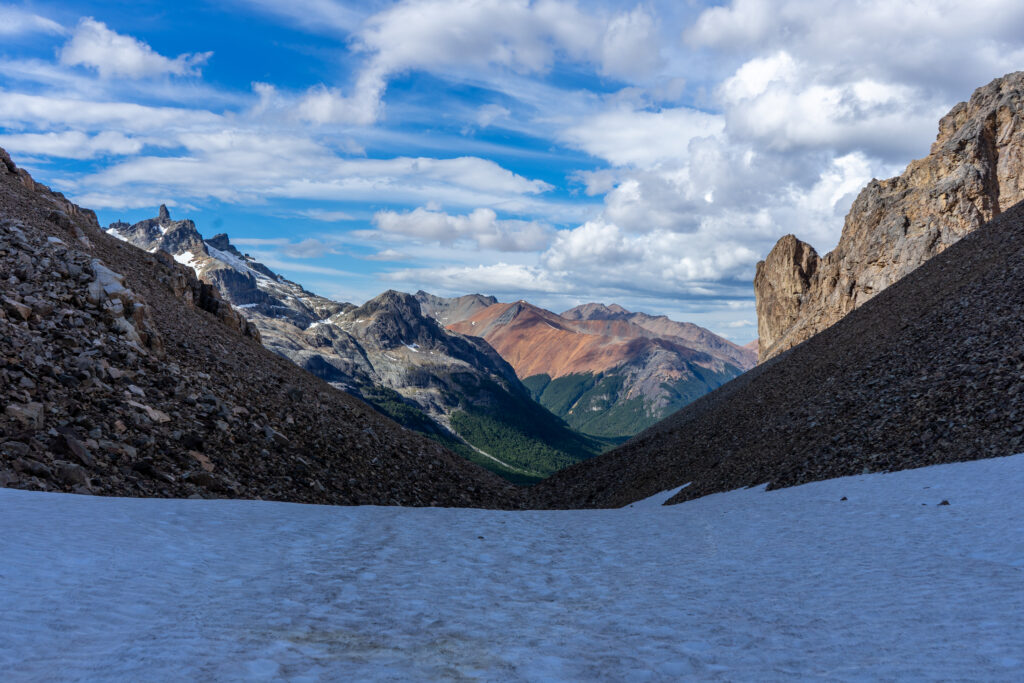
The second-highest point you’ll cross when trekking Cerro Castillo Circuit is Penon Pass. Like Morro Negro, the ascent and descent is steep on both sides and requires careful footing, but the views at the top of the pass are stunning.
The west side of the pass has ropes spanning a few hundred feet to assist with footing and the steepness. Like Morro Negro, I’d recommend ascending and descending Penon Pass earlier in the day, in prime weather conditions.
Snow remains at the top of Penon Pass longer than anywhere else on the Cerro Castillo Circuit. It’s not overly steep but requires careful footing. If you’re hiking in the early spring, microspikes are a great idea if snow levels are high.
What to Pack for Trekking Cerro Castillo Circuit
Like planning any remote backpacking trip, trekking Cerro Castillo requires all camping, cooking, and personal gear because there are no refugees or lodging to stay in and you must prepare all your meals.
This is my personal Cerro Castillo Circuit packing list:
Backpacking Gear
- 55 – 65 L backpack
- 15 – 30 degree F sleeping bag
- Sleeping pad
- 3-season tent
- Headlamp
- Trekking poles
Kitchen Gear
- Camp stove
- Lighter or fire starter
- Camp bowl
- Mug
- Spork
- Pocket Knife
- Water filter
- Meals
- Snacks
Clothing
- Puffy jacket
- Rain jacket
- Fleece jacket
- Sun hoodie
- Athletic shorts
- Socks
- Hiking boots or trail runners
- Sandals or camp shoes
- Gloves
- Sun hat
- Warm hat
- Sunglasses
Other Items
- Toilet paper
- Plastic bag
- Toothbrush & toothpaste
- Toiletries – tampons/pads
- Chapstick
- Sunblock
- Personal prescriptions
- First aid kit – over-the-counter medicines (Benadryl, Acetaminophen, Ibuprofen), blister kit (Compeed, moleskin), band-aids, triple antibiotic ointment, medical tape or KT tape, medical scissors
- Small repair kit – duct tape, tent pole splint, paracord, patches
- Paper map
- GPS map
- Garmin InReach Mini
Cost of Trekking Cerro Castillo
Overall, trekking Cerro Castillo Circuit is one of the cheapest multi-day treks for a Patagonia national park. Because there are no fees for campgrounds and you must pack all your food, it’s a great option for those traveling on a budget or if you prefer trekking without backcountry amenities.
I had all my camping equipment with me but it’s possible to rent any camping and cooking gear in Coyhaique.
Prices are listed in Chilean Pesos
Bus from Coyhaique to Trailhead: $8,000
Park Entrance Fee: $30,000 (3 – 4 days)
Hitchhike back to Coyhaique: Free
Food: $25000 (3 days of hiking)
Fuel: Free from a free bin at a hostel
Cerro Castillo vs Torres del Paine
Both Cerro Castillo Circuit and the W-Trek in Torres del Paine offer incredible hiking experiences in Chilean Patagonia however, they are very different. This guide can help you determine which trek is right for you.
| Cerro Castillo Circuit | Torres del Paine W-Trek | |
| Location | 1 hour south of Coyhaique in Cerro Castillo National Park | 2 hours northwest of Puerto Natales |
| Distance | 35 miles; 56 km | 46 mi; 74 km |
| Beauty | Stunning views but not as iconic as Torres del Paine | Known as one of the most beautiful places in Patagonia and one of the most popular treks in the world |
| Crowding | Not nearly as crowded, becoming more popular but feels like a natural backcountry experience. | Very crowded |
| Camping or Lodging | Easy to plan at least a minute; Camping only | Book designated campsites or lodging well in advance or stay |
| Camping Amenities | Picnic tables, pit toilets, designated camping areas | Designated camping areas, showers, cooking tents, and camping platforms |
| Permits or Reservations | Walk-up permit; no campsite reservations required | Permit online or upon arrival; must book all accommodation in advance |
Other notes
- Coyhaique is a great starting city for the Cerro Castillo Circuit. Buy your food, rent gear if needed, and pick up a map when in town.
- Don’t carry more than you need on hikes. Most accommodations allow you to store your other travel items while you’re out trekking.
- Cerro Castillo National Park has established national park entrance cutoff times. You must reach the Cerro Castillo trail entrances before the cutoffs.
- The Estero Parada entrance (the Villa Cerro Castillo entrance point) is open from 7:00 am to 4:00 pm.
- Enter the Las Horquetas entrance from 7:00 am to 1:00 pm to allow enough time to get to Camp Turbio.
- Don’t forget to purchase travel insurance! Sometimes the rangers ask for proof before you start your Cerro Castillo hike.
- If you’re limited on time, it’s also possible to do a Cerro Castillo day hike up to Laguna Cerro Castillo. It’s tough but it’s one of the best day hikes in the area.

Trekking in Cerro Castillo National Reserve was one of my favorite adventures on my recent South America trip. The stunning vistas, pristine lagoons, and dense forests showcased some of the best that Patagonia offers.
So whether you’re road-tripping along the Carretera Austral or exploring around Coyhaique, make sure you add trekking Cerro Castillo Circuit to your Patagonia national park bucket list.
